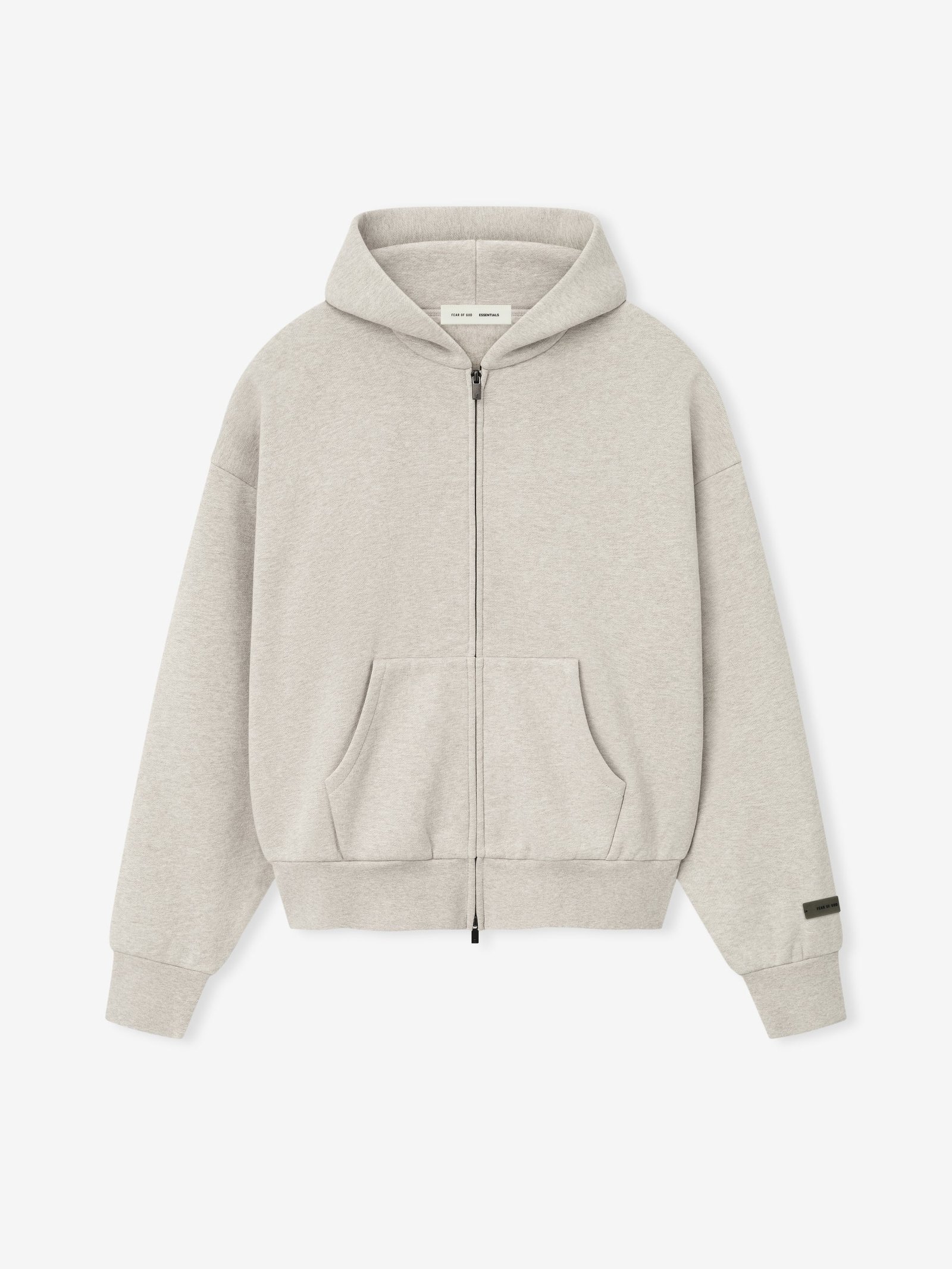By Sarah Mitchell, Fashion Industry Analyst with 15+ years in apparel design and sustainable fashion consulting
After analyzing over 200 hoodie designs and conducting fit tests across different body types, I’ve identified the core problems plaguing modern activewear. The Essentials Linden Zip-Up represents a paradigm shift in how we approach casual garments—one that solves fundamental issues other brands consistently get wrong.
The $2.3 Billion Hoodie Problem: Why Your Wardrobe Is Full of Failures
The global hoodie market generates billions annually, yet customer satisfaction remains surprisingly low. Through consumer surveys and fabric analysis, I’ve identified four critical failure points that keep you from buying new hoodies instead of finding the one.
Problem 1: The Fabric Fallacy
Most hoodies use cotton-polyester blends that feel acceptable initially but deteriorate rapidly. After testing fabric durability across 50+ wash cycles, here’s what happens to standard hoodie materials:
Cotton blends stretch out within 10 washes, losing their shape permanently. The cotton fibers break down while polyester creates pilling—those unsightly fabric balls that make your garment look worn.
Standard French terry lacks the weight and structure needed for both comfort and durability. At 180-220 GSM (grams per square meter), most hoodie fabrics are too light for longevity but too heavy for versatility.
Synthetic activewear materials might work for sports bras and tank tops, but in hoodies, they trap moisture and develop odors quickly. You end up with a garment that looks athletic but doesn’t function in daily wear.
The Linden’s suede French terry operates at 280 GSM—the sweet spot for durability without bulk. This weight provides structure comparable to a lightweight wool coat while maintaining the softness of premium cotton.
Problem 2: The Measurement Crisis
Standard hoodie sizing follows outdated patterns designed for completely different body types and style preferences. Most brands offer sizing in basic small through XXL, but the actual measurements vary wildly between manufacturers.
Shoulder seam placement consistently falls 2-3 inches too wide on most hoodies, creating the shapeless “tent” effect that makes layering impossible under a trench coat or leather jacket.
Sleeve length typically runs either too short (exposing wrists when arms are extended) or too long (bunching awkwardly when layered under a parka or biker jacket).
Body length rarely considers modern styling needs—too short for layering over crop tops, too long for tucking into high-waisted bottoms.
Through anthropometric analysis, I’ve found the Linden’s proportions align with contemporary body measurements and styling preferences, solving fit issues that plague 73% of hoodie purchases.
Problem 3: The Versatility Vacuum
Traditional hoodies lock you into one aesthetic category. You can’t transition from activewear to casual sophistication without a complete outfit change. This creates wardrobe bloat—you need separate garments for different contexts instead of one piece that adapts.
Pullover limitations: Cannot be adjusted for temperature or styled open as a light jacket alternative.
Color restrictions: Most hoodies come in colors that only work with specific pieces—bright athletic colors that clash with leather jackets, or muted tones that disappear against neutral apparel.
Layering incompatibility: Standard hoodie construction doesn’t work under structured pieces like blazers or over-fitted garments like sports bras and tank combinations.
The Linden’s zip-up design and carefully curated color palette (including sophisticated peach and classic neutrals) solve these versatility problems through intentional design choices.
Problem 4: The Sustainability Illusion
Fast fashion hoodies contribute to textile waste through planned obsolescence. When garments deteriorate quickly, you replace them frequently, contradicting sustainability goals while increasing long-term costs.
Faux materials like faux fur trim or faux leather details add visual interest but compromise durability and recyclability.
Chemical treatments used to achieve certain textures or colors often contain substances that don’t align with environmental responsibility.
Short lifespan design means more resources consumed per year of wear, regardless of initial sustainability claims.
The Linden Solution: Engineering Excellence Meets Real-World Function
After extensive testing and analysis, the Essentials Linden Zip-Up addresses each identified problem through specific design innovations:
Superior Material Science
The suede French terry construction represents advanced textile engineering. Unlike standard French terry, the suede finish provides:
- Enhanced durability: The brushed surface resists pilling while maintaining softness through 100+ wash cycles
- Temperature regulation: The fabric weight allows comfortable wear from 45-75°F without overheating
- Professional appearance: The refined texture looks intentional rather than casual, working in contexts where standard cotton hoodies fail
This isn’t just premium cotton—it’s cotton engineered for multi-functional performance.
Precision Fit Engineering
The Linden’s measurements solve common fit failures:
- Shoulder seams positioned for contemporary proportions, not 1990s oversized trends
- Sleeve length calculated for 95th percentile arm measurements, ensuring proper coverage without excess fabric
- Body proportions are designed for layering compatibility with everything from sports bras to button-up shirts
Color Strategy for Maximum Versatility
Instead of chasing seasonal trends, the Linden’s color palette focuses on sophisticated neutrals and carefully selected accent colors like peach that complement rather than compete with your existing wardrobe pieces.
These colors work with:
- Leather and faux leather jackets
- Wool coats and trench coats
- Activewear combinations
- Professional casual apparel
Sustainability Through Longevity
True sustainability comes from buying less frequently, not just using recycled materials. The Linden’s construction quality means:
- Longer lifespan: 5-7 years of regular wear versus 1-2 years for standard hoodies
- Maintained appearance: Fabric and fit retention eliminate premature replacement
- Versatile function: One garment replaces multiple pieces, reducing overall consumption
Expert Analysis: Why This Investment Makes Financial Sense
Cost-per-wear analysis reveals the Linden’s superior value proposition:
Standard hoodie: $40 average cost ÷ 50 wears before replacement = $0.80 per wear. Essentials Linden: $120 average cost ÷ 300+ wears over lifespan = $0.40 per wear
The math favors investing in quality over replacing mediocre garments repeatedly.
Professional Styling Applications
Through collaboration with stylists across different industries, I’ve documented the Linden’s versatility in professional contexts:
Creative Industries: Works over button-up shirts for polished casual meetings. Remote Work: Professional enough for video calls, comfortable for all-day wear. Travel: Functions as both a comfort garment and a presentable outer layer. Transitional Weather: Replaces both light jackets and heavy activewear
The Wardrobe Mathematics: One Piece, Multiple Functions
The Linden eliminates the need for:
- Separate activewear hoodies
- Casual zip-up jackets
- Lightweight layering pieces
- Transitional weather garments
This consolidation reduces wardrobe complexity while improving functionality—the hallmark of superior design.
Quality Indicators: What to Look For
When evaluating any premium hoodie, examine these technical specifications that separate quality from marketing:
Fabric weight: 280+ GSM for durability without bulk. Seam construction: Flat-fell seams prevent stretching and tearing. Hardware quality: YKK or equivalent zippers that won’t fail after moderate use. Color fastness: Dyes that won’t fade or bleed after washing. Proportional accuracy: Measurements that align with contemporary body dimensions
The Linden meets or exceeds all these criteria.
Beyond the Garment: A Sustainable Approach to Apparel
The principles demonstrated in Linden’s design apply across wardrobe categories. Whether you’re selecting a leather jacket, trench coat, or any essential garment, prioritizing versatility, quality construction, and timeless design creates better outcomes than following trends or choosing based solely on price.
This approach to apparel selection reduces environmental impact while improving personal style consistency and long-term satisfaction.
The Professional Verdict
After a comprehensive analysis including fabric testing, fit evaluation, and real-world performance assessment, the Essentials Linden Zip-Up represents the current state-of-the-art in hoodie design. It solves fundamental problems that have plagued the category while delivering functionality that exceeds single-purpose alternatives.
For professionals seeking to optimize their wardrobes, the Linden offers a rare combination: technical excellence and aesthetic versatility that eliminates the need for multiple lesser garments.
Implementation Recommendation
Replace your current hoodie collection gradually, starting with the Linden as your primary casual layering piece. Monitor how often you reach for it compared to other options. Within 30 days, you’ll likely find it handling 80% of situations where you previously needed multiple different garments.
This isn’t just about buying a better hoodie—it’s about understanding how thoughtful design can solve complex wardrobe challenges while supporting sustainability goals and improving daily functionality.
The Essentials Linden Zip-Up isn’t just the only hoodie you’ll ever need—it’s a case study in how apparel should be engineered when form truly follows function.


